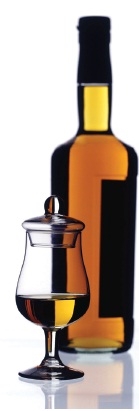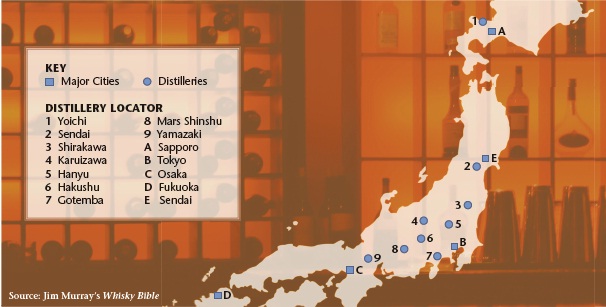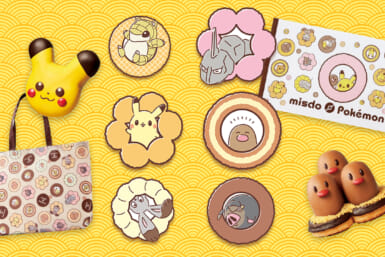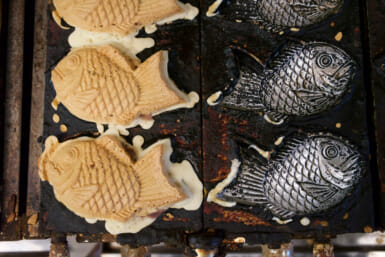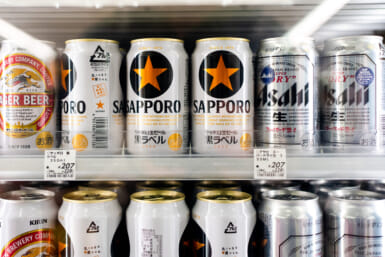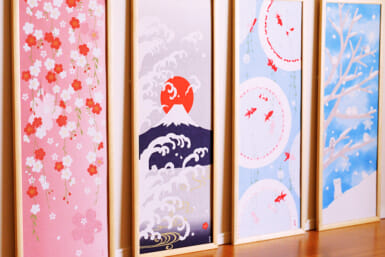Scotsman Andrew McKirdy finds Japan has a lot to offer
In the eyes of shoppers around the world, there are certain products that represent the last word in Japanese elegance and sophistication. When it comes to sushi and sports bikes, sake and sashimi, no one else can come close.
Other countries have their own areas of classic expertise, of course. Japanese shoppers are just as quick to drink French wine as they are to wear Italian suits, happy in the knowledge that they are buying into the traditions of a country that has refined and perfected its craft down through the generations.
Few products bear such a mark of prestige and national identity as Scotch whisky. Scotland’s whisky industry is universally seen as the pinnacle of quality, with shoppers all over the world, and particularly Japan, clambering over each other to reach for the Glenlivet or Ardbeg.
According to Scotland’s leading
whisky experts, Japanese whisky is
one of the world’s best-kept secrets.
But in doing so, are they ignoring what is already under their own noses?
According to Scotland’s leading whisky experts, Japanese whisky is one of the world’s best-kept secrets. Dominic Roskrow, contributing editor to the hugely influential Whisky Magazine, is happy to preach the gospel that the Japanese themselves have been ignoring for so long.
“Some Japanese whisky is extremely good indeed,” he says. “Originally the Japanese did what they did with cars. They came and had a good look at the way it is done in Scotland, then copied it and improved rapidly to the point that they equaled or in some cases surpassed Scotland.”
The pioneer for Japanese whisky making was Masataka Taketsuru, a trained chemist born into a family of sake brewers. But despite his family’s tradition, it was whisky that caught his imagination. Enrolling himself at Glasgow University, he set off for Scotland to learn the secrets of how it was made. Taketsuru’s dedication paid off, as he progressed through the ranks at Scottish distilleries to earn himself a reputation as a master blender.
In 1920 he returned to Japan with his Scottish wife, Rita, with the vision of producing truly worldclass whisky in Japan. The result was Nikka Whisky, established in Yoichi, Hokkaido, in 1934. The brand has since gone from strength to strength, and confirmation that it could finally hold its own with Scotland’s elite came in 2001, when Yoichi’s ten-year-old Single Cask was awarded top prize in Whisky Magazine’s biennial Best of the Best competition.
The contest brings together the 40 highest-scoring whiskies from the magazine’s rankings to compete in a blind taste test judged by 100 experts from around the world. Naoko Nakamoto, from the Yoichi distillery, hopes the award will prove to be the catalyst for success in the future, as well as recognition of the improvements Japanese whisky has made so far.
“We are sure the quality of Japanese whisky has been improving recently,” she says. “It has become particularly well-known abroad since our brand was marked the highest score in 2001. “Japanese single cask and malt whisky have recently gained popularity in Europe, so we think all varieties of Japanese whiskies will be become better known in the near future.” But Mr. Roskrow thinks the prestige that Scottish whisky carries will be a difficult hurdle to overcome. “A prophet is always condemned in his own land,” he says, “and there is a reverence towards Scottish single malt in Japan. “Elsewhere most people don’t know Japanese whisky and initially refuse to accept that it could be very good. There is a lot of great Scottish single malt about, so why would you move to Japanese? It’s also relatively rare and relatively expensive. But those who know what they’re talking about recognize it as valuable and special, and it is building a reputation.” However, praise for Japanese whisky among the experts is also tempered with criticism.
The Scottish whisky industry has a tradition of cooperation; of combining produce from various distilleries to create blends. This cross-fertilization helps to keep the industry buoyant and varied, but it is not a practice that Mr. Taketsuru brought back with him when he returned to his homeland.
“We know that different distilleries in Scotland have been exchanging their malt since early times,” Ms. Nakamoto says. “But in Japan we haven’t had the custom to adopt this system because each whisky maker, including Nikka, has been producing various types of malt and grain whisky in their own distilleries in order to make distinctive and original products for many years. The system is a well established custom in Japan, so we don’t think it will change for the time being.”
Mr. Roskrow sees other problems for the Japanese whisky industry. “Japanese whiskies tend to be brash and bold and sometimes over the top,” he says. “I think it’s also fair to say that, just like their cars, they can match other whiskies in terms of technique and performance, but they lack something because they can’t call on the heritage that Scotland can. It’s sort of like comparing a top end Toyota with a Rolls Royce.”
But Mr. Roskrow also acknowledges that such a comparison is unfair. “Increasingly, Japanese whiskies have started to carve out an identity of their own, and shouldn’t be compared directly to Scotch any more than Irish whiskey or bourbon should,” he says. “They should be defined as Japanese whiskies in their own right.”
“There is a growing interest in Japanese whisky and also a growing understanding of Asian culture and food.” Roskrow adds, “As people seek out a more authentic Japanese experience when they go out, they will seek out Japanese whisky. I can imagine it becoming quite fashionable in due course, and certainly better known. I think it is already respected by those that have tasted it. It just needs to make more noise and get better distribution. I’m sure that will happen in time.”
In the meantime, perhaps you should consider going local for your next tipple.

